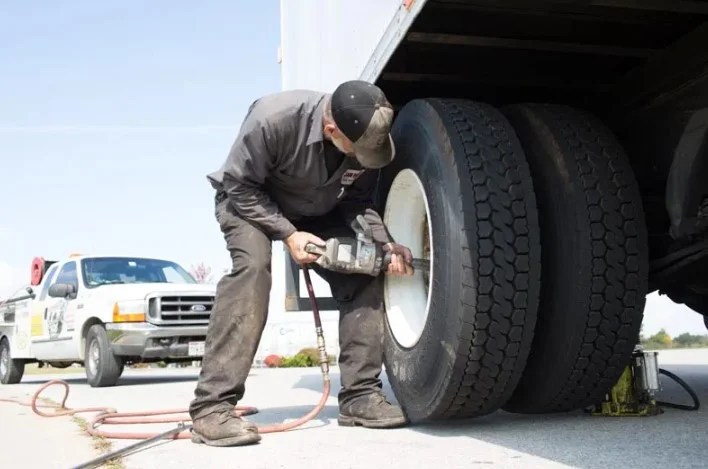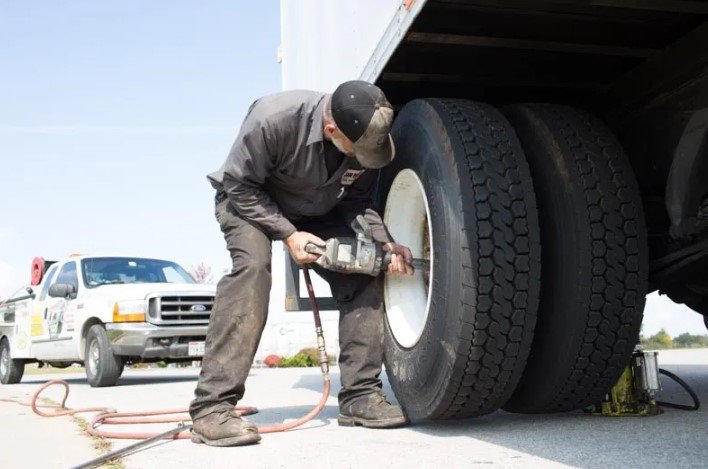
Big Truck Tire Repair: Ensuring Smooth Journeys
Introduction to Big Truck Tire Repair
Big trucks are the workhorses of many industries, carrying heavy loads over long distances. With such rigorous use, it’s inevitable that their tires will face wear and tear, leading to occasional repairs. In this guide, we’ll delve into the intricacies of big truck tire repair, covering common issues, preventive maintenance, repair procedures, safety measures, and more.
Common Issues with Big Truck Tires
Wear and Tear
Continuous usage and exposure to various road conditions can cause gradual wear and tear on big truck tires, eventually leading to the need for repair or replacement.
Punctures
Punctures from sharp objects or debris on the road are a frequent occurrence for big truck tires, necessitating immediate attention to prevent further damage.
Blowouts
Blowouts, often caused by overloading, improper inflation, or structural weakness, pose significant safety risks and require prompt repair.
Preventive Maintenance for Big Truck Tires
Regular Inspections
Frequent visual inspections of tire condition, tread depth, and air pressure can help identify potential issues early on, allowing for timely repairs or replacements.
Proper Inflation
Maintaining the recommended tire pressure not only extends the lifespan of big truck tires but also enhances fuel efficiency and vehicle performance.
Wheel Alignment
Proper wheel alignment ensures even tire wear and optimal handling, reducing the likelihood of premature tire damage.
Tools Required for Big Truck Tire Repair
Tire Irons
Tire irons facilitate the removal and installation of tires from the wheel rim, essential for accessing the tire for repair.
Jack
A sturdy jack is necessary for lifting the truck to facilitate tire removal and replacement safely.
Puncture Repair Kit
A puncture repair kit containing patches, plugs, rubber cement, and other essential tools enables quick and effective repair of punctured tires.
Step-by-Step Guide for Repairing Big Truck Tires
Assessing the Damage
Begin by inspecting the tire to determine the extent of the damage and whether repair is feasible.
Removing the Tire
Use tire irons and a jack to lift the truck and remove the damaged tire from the wheel assembly.
Repairing Punctures
Clean the puncture area, insert a plug or patch into the hole, and secure it in place using rubber cement or adhesive.
Replacing the Tire
If the damage is extensive or irreparable, replace the tire with a new one, ensuring proper installation and alignment.
Safety Measures During Tire Repair
Using Safety Gear
Wear appropriate safety gear, including gloves and eye protection, to prevent injuries during tire repair.
Avoiding Hazardous Areas
Choose a safe and level location away from traffic when repairing tires to minimize the risk of accidents or injuries.
Professional Assistance vs. DIY Repair
Advantages of Professional Repair
Professional tire repair services offer expertise, specialized equipment, and warranties, ensuring quality repairs and peace of mind.
When DIY Repair is Feasible
Simple repairs such as patching minor punctures can be performed DIY, saving time and money for truck owners/operators.
Cost of Big Truck Tire Repair
Factors Affecting Cost
The cost of tire repair varies depending on factors such as the extent of damage, type of repair, and labor rates.
Budgeting for Tire Maintenance
Incorporating tire repair and maintenance costs into the budget ensures timely servicing and minimizes unexpected expenses.
Conclusion
Proper maintenance and timely repair are crucial for ensuring the safety, performance, and longevity of big truck tires. By following preventive measures, conducting regular inspections, and knowing when to seek professional assistance, truck owners can minimize downtime and maximize efficiency on the road.
FAQs
- How often should I inspect my big truck tires for damage?
- Can I repair a punctured big truck tire myself?
- What should I do if I experience a blowout while driving?
- Are there any warning signs of impending tire failure to watch out for?
- What factors contribute to premature wear and tear of big truck tires?





